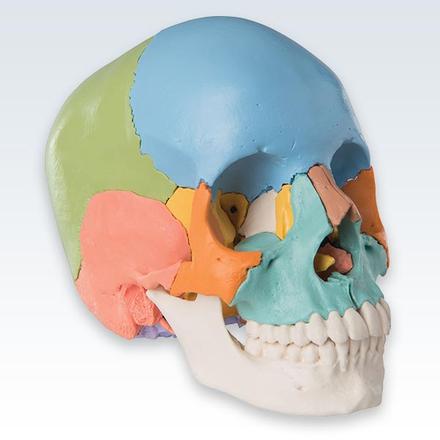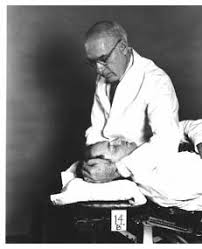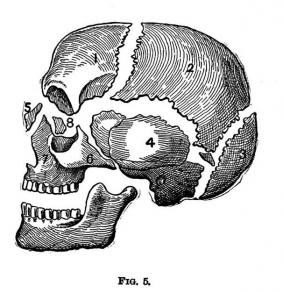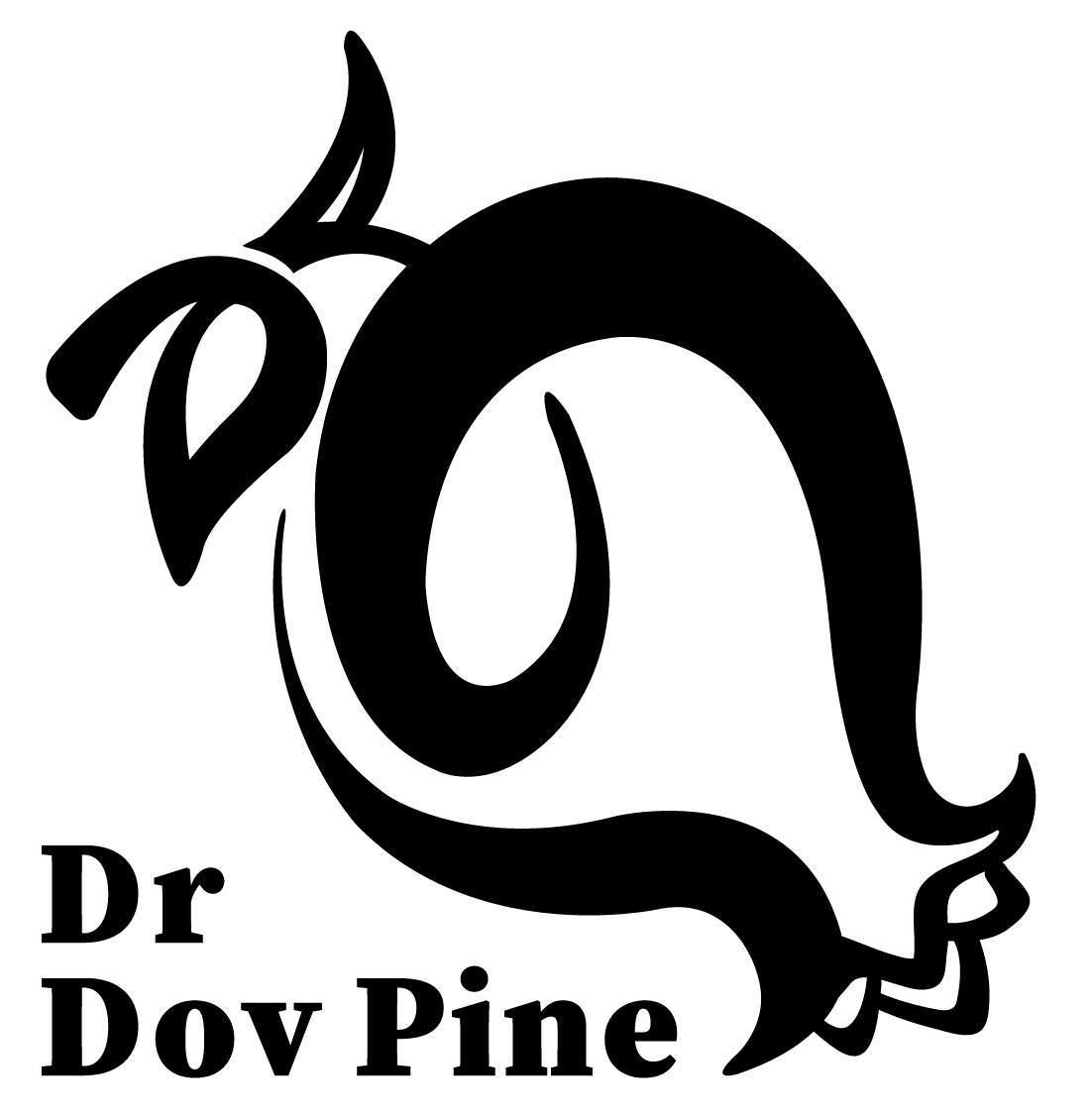Cranial Manipulation – the ins and outs
Ever had a head injury, or experienced a difficult birth process with traction or vacuum extraction, even a c-section birth?

Cranial manipulation, craniopathy or cranial work as it is commonly called is the science and technique of realigning the structures of the skull and face to restore orthopedic and neuro-functional balance. It is a “performed by hand” manual correction.
The skull and face are made up of 22 individual bones that are capable of misaligning and causing acute and chronic health issues. Imbalances in the cranial bones often occur during birth and the developmental years while the skull is still soft and pliable.
Head and spinal injuries from falls, accidents and other trauma also play a role at any stage in life. The stresses exerted on brain tissue, cranial nerves, cerebro-vascular system and more prevent optimal brain function and lead to a myriad of health issues.
Cranial Manipulation in practice
Utilizing cranial manipulation in our clinical practice is inseparable from traditional Chiropractic work. The reason being, just as everyone has a spine capable of mechanical imbalances, so too does every person have a head capable of the same. In fact look in the mirror, the face is just as asymmetrical as the rest of the posture of the body. Considering the fact that the brain, 80% of the body’s nervous system, is protected by the skull, it would appear a gross oversight to not perform cranial orthopedic assessments and corrections as appropriate. In practice, I utilize what is called SOT Craniopathy.
Patients who attend our practice looking to receive cranial work often present with issues such as jaw pain, TMJ / TMD, jaw clenching (bruxism), vertigo, swallowing difficulty, chewing difficulty, unresolvable migraines and other forms of headaches. Sleep apnea, chronic sinus issues and post concussive disorders are other classes of issues that often benefit from cranial work.
Special approaches and cranial techniques are utilized for newborns and infants, especially those with a history of traumatic birth, c-section delivery, plagiocephaly or tongue and lip tie. Midwives, lactation consultants and pediatric physicians are often involved in co-management to address such issues.
The origins of Craniopathy / Cranial Manipulation
As already explained, craniopathy is a specialized field of chiropractic that deals with the changes within the bones of the skull, and how they function. It all began in the 1930’s when an Osteopath named Dr. Sutherland observed that the individual bones of the skull express some level of movement.1 He noted subtle pulsations in the cranium similar to those felt throughout the entire body and was the first to give descriptions of the cranial sacral respiratory mechanism. To explain in simple terms, just as the body expands and contracts with phases of breath, so too does the skull. Additionally, a reciprocal tension and expansion exists between the cavity of the skull and the bottom of the spine causing fluid to pump up and down the brain and spinal cord. The concepts and theories he developed in time became the basis of modern day cranial sacral therapy. Dr. Sutherland the developer of Cranial Osteopathy, had a favorite expression “as the twig is bent, so grows the tree.”1
When you go to put your hands on someone’s head, you’d better have clean hands, positive thoughts in your mind, and love in your heart.
Dr. Major DeJarnette DC, DO.
Dr. Major Bertrand DeJarnette DC. DO., was a personal student of Dr. Sutherland in the 1930s. Inspired by Palmer’s Chiropractic philosophies and the cranial sacral mechanism described by Sutherland, De Jarnette developed Sacro Occipital Technic (SOT). SOT is a Chiropractic method that integrates three systems: (1) the spinal-nervous system complex; (2) the cranial – cerebrospinal fluid mechanical complex and (3) the visceral system. This highly integrative Chiropractic methodology treats the human body as an integrated and holistic system2 by espousing what would otherwise be separate professions and perspectives.

DeJarnette’s SOT Craniopathy developed over decades and today expresses the most comprehensive approach to Cranial Manipulation. It is utilized only by Chiropractic doctors trained in clinical differential diagnosis and co-ordinates cranial manipulation with whole-body procedures.
This includes specific vertebral adjustments, pelvic and respiratory corrections, soft tissue techniques and a range of neurological reflex techniques. Its purpose is to restore balance and health by integrating corrections in the nervous system, cerebrospinal fluid dynamics and mechanical aspects of cranial structure and function.3
SOT and SOT Craniopathy form a diagnostic and therapeutic system, concerned with the study of the anatomic and physiologic mechanisms in the cranium and their interrelationship with the body as a whole, to facilitate the body’s Innate healing powers.
The Brain, Development, Health Issues….
The craniosacral pump system operates similar to a semi-closed hydraulic system. Pressures build as the amount of cerebrospinal fluid (CSF) increases in the skull, forcing the fluid to move up and down the spinal cord. When the fluid moves, the membranes containing it also move, normally at a rate of 6-12 cycles per minute.4 This pumping mechanism is the primary driver for orchestrated movements of the cranial bones. This may be considered one of 3 primary rhythms of life in the body- the heart beat, the respiratory cycle and the CSF oscillating cycle. Neurological and orthopedic health conditions may arise when this third rhythm goes out of balance. The reason being is quite simple, the CSF is responsible for providing buoyancy to the brain, electrolyte balance, waste removal and more. The most important time to check the CSF rhythm and alignment in the cranial bones is following birth. Delivery through the birth canal is a stressful process to say the least. Unfortunately it often involves traction, twisting and sometimes even vacuum extraction on the newborns delicate head.
Consider that the brain grows 21/2 to 3 times its birth size in the first year of life. It weighs about 350 grams at birth and grows to about 1000 grams by the first birthday. 90% of the synaptic connections and neurological development takes place by age 6.5 Damage or imbalance to the spine, cranium and brain during the developmental stages will cause dysfunctional compensatory patterns as the body attempts to integrate function properly.6 That is why we place such an importance in utilizing cranial work with our newborn, infant and pediatric patients. In fact, at any stage during life, imbalances in the nervous system caused by cranial or vertebral misalignments may lead to dysfunction and reduction in full expression of health.
Every child should be checked for spinal and cranial subluxations immediately after birth. Development and growth occurs via sensory information processing- good information in good information out or as Dr. Sutherland once said: as the twig is bent, so grows the tree.
A hit to the head can cause cognitive and functional imbalances that last a lifetime. Other issues that are often treated with Cranial Manipulation or reflect imbalances in the cranial bones include:
- Bruxism (teeth clenching / grinding), Chronic Fatigue, Coordination and Developmental Disorders
- Concussion / Post Concussion Syndrome, Failure to thrive, Hearing and Speech Disorders
- Hormone imbalances, Insomnia, Migraines, Plagiocephaly, Otitis Media
Sinus problems, Tinnitus, - TMJ and TMD
- Tongue and Lip Tie
- Vertigo, Vision problems and more

- Sutherland WG. The Cranial Bowl. Mankato, MN: Free Press Company; 1939.
- Joseph F. Unger, Jr., D.C., F.I.C.S. February 2004 – http://www.sorsi.com/about-us/sot-inner.html
- Leon Chaitow. Cranial Manipulation: Theory and Practice Osseous and Soft Tissue Approaches. Churchill Livingstone, 1999. pp. 115-123
- http://www.massagetoday.com/archives/2002/10/14.html
- Martin Rosen DC. CSP, CSCP, CSPP SOT Pediatric Cranial Adjusting ICPA 2007
- Anne Jäkel,Phillip von Hauenschild. Therapeutic Effects of Cranial Osteopathic Manipulative Medicine: A Systematic Review. The Journal of the American Osteopathic Association, December 2011, Vol. 111, 685-693.
